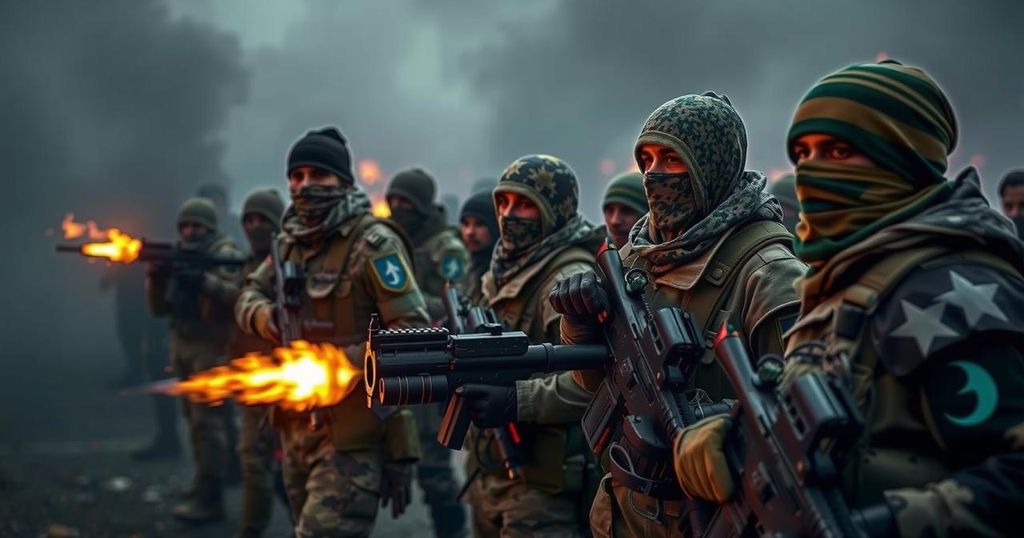Aleppo’s Fall: A Shift in the Balance of Power in Syria
The fall of Aleppo to Syrian rebels marks a significant shift in the conflict, influenced by reduced Russian support due to its focus on Ukraine and diminished Iranian proxies following Israeli airstrikes. The surprise offensive demonstrates the shifting balance of power and the ongoing unresolved nature of the Syrian civil war.
In a startling turn of events, Syrian rebels launched a surprise offensive that led to the recapture of Aleppo, a pivotal city previously under the control of President Bashar al-Assad’s forces. The offensive reflects a significant shift in the dynamics of the Syrian conflict, influenced largely by external factors such as the ongoing war in Ukraine, which has diverted Russian military resources, and Israel’s persistent operations against Iranian proxies in the region. This change has left Assad’s regime vulnerable and has reignited an enduring, unresolved conflict in the region.
Aleppo, once the epicenter of fierce conflict between 2012 and 2016, saw rebel groups ousted by government forces aided by Russian air power. However, since the 2020 intervention by Turkey which bolstered the position of the jihadist group Hay’at Tahrir al-Sham (HTS), the balance of power has shifted once again. Following a period of ceasefire, the recent offensive, which commenced mid-week, quickly overwhelmed government defenses, bringing the city under rebel control amid ongoing assessments of power and strategy.
The sudden collapse of Assad’s defenses can be attributed to the diminished capabilities of his backers. Russia’s military focus has largely shifted to the war in Ukraine, as noted by the Institute of the Study of War, leading to the withdrawal of crucial missile systems from Syria. Consequently, Moscow’s ability to support Assad effectively has waned, allowing rebel forces to capitalize on this weakness.
Moreover, Israel’s aggressive stance towards Iranian-backed forces has further eroded Assad’s support base. With Hezbollah and other Iranian proxies suffering significant losses due to Israeli airstrikes, Iran’s reluctance to intervene decisively on behalf of Assad signals a new degree of vulnerability for the regime. “Iran proxies have been substantially degraded, and this has an unquestionable impact on the Assad regime’s ground forces,” remarked Burcu Ozcelik, a Middle East expert.
Amidst this tumultuous environment, the HTS has adeptly seized the moment to launch an offensive that many experts agree reveals their long-term strategic intentions. However, the rapidity of their initial success may have exceeded their own expectations, suggesting that the situation remains fluid and fraught with potential for future escalation.
The conflict in Syria continues to evolve, with recent developments around Aleppo illustrating a significant change in momentum. The city, which had been under intense government control for years, is now in the hands of rebel forces, marking a resurgence of conflict influenced by broader regional dynamics. Key external factors, particularly the ongoing military engagements in Ukraine and Israel’s interventions against Iranian proxies in the region, have contributed to a weakened Assad regime, facilitating this recent offensive by the HTS.
The recent surprise offensive by Syrian rebels has shifted the dynamics of power in the region, highlighting the vulnerabilities of the Assad regime due to external military distractions faced by its supporters. As Russia reallocates its military resources towards Ukraine and Israel intensifies its strikes against Iranian interests in Syria, the landscape of the conflict has changed dramatically. This resurgence of conflict underscores that the issues within Syria remain unresolved, potentially heralding a prolonged period of instability as rebels increasingly challenge the regime.
Original Source: www.theguardian.com




Post Comment